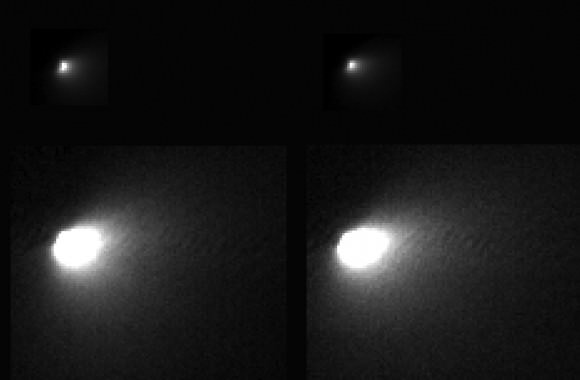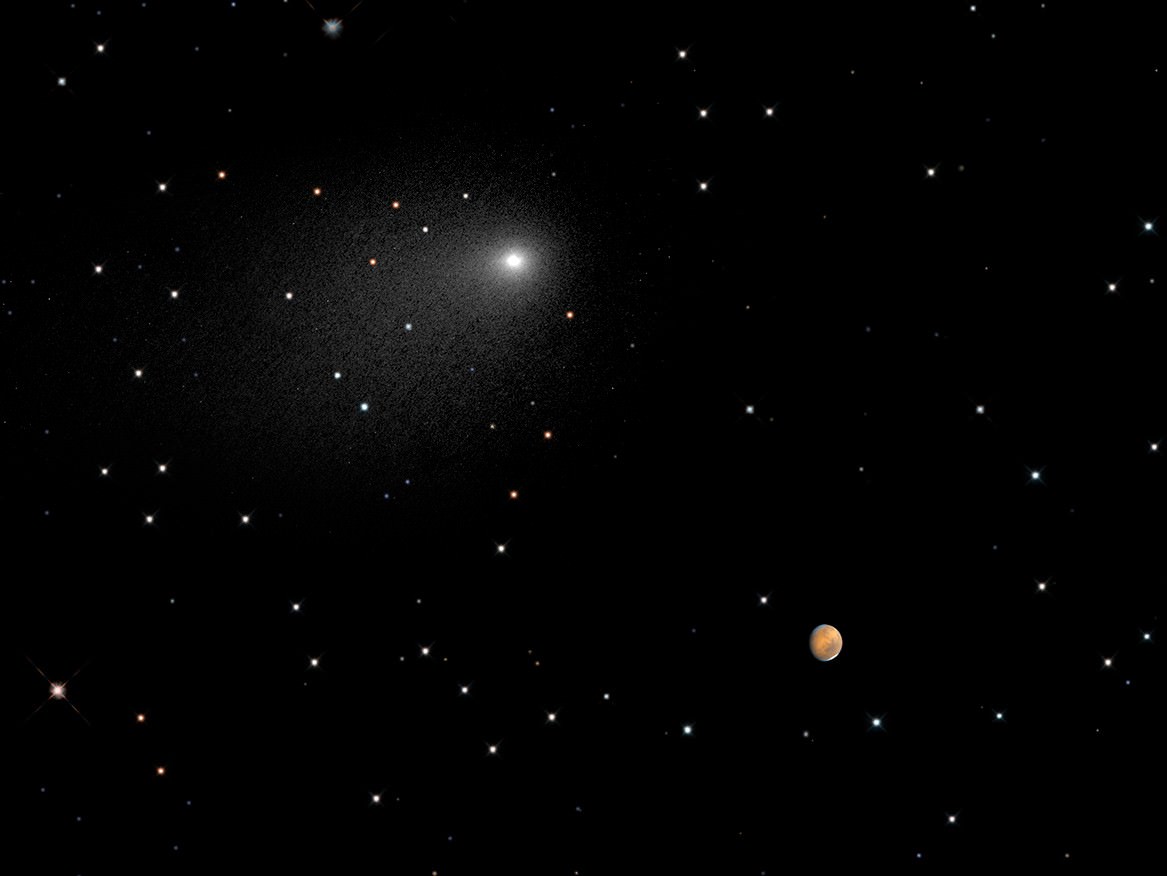We’ve seen spectacular images of Comet Siding Spring from Mars spacecraft, showing just how close the small body was to the Red Planet when it whizzed by Sunday (Oct. 19). But how close were the two objects actually, in the sky? This Hubble Space Telescope composite image shows just how astoundingly near they were.
Above are two separate exposures taken Oct. 18-19 EDT (Oct. 18-20 UTC) against the same starry field image from another survey. It was a complicated shot to get, NASA explains, but it does serve as a powerful illustration of the celestial close encounter.
“This is a composite image because a single exposure of the stellar background, comet Siding Spring, and Mars would be problematic. Mars is actually 10,000 times brighter than the comet, and so could not be properly exposed to show detail in the Red Planet,” NASA stated.

“The comet and Mars were also moving with respect to each other and so could not be imaged simultaneously in one exposure without one of the objects being motion blurred. Hubble had to be programmed to track on the comet and Mars separately in two different observations.”
The two images were blended together in this single shot, showing their separation of 1.5 arc minutes (1/20 of the Moon’s apparent diameter.) The background stars comes from data from the Palomar Digital Sky Survey “reprocessed to approximate Hubble’s resolution”, NASA stated.
While the nucleus is too small to be imaged by Hubble, you can see what it looks like in the image above from the Mars Reconnaissance Orbiter. Siding Spring passed by the Red Planet at a distance of just 87,000 miles (140,000 km).
Source: NASA

